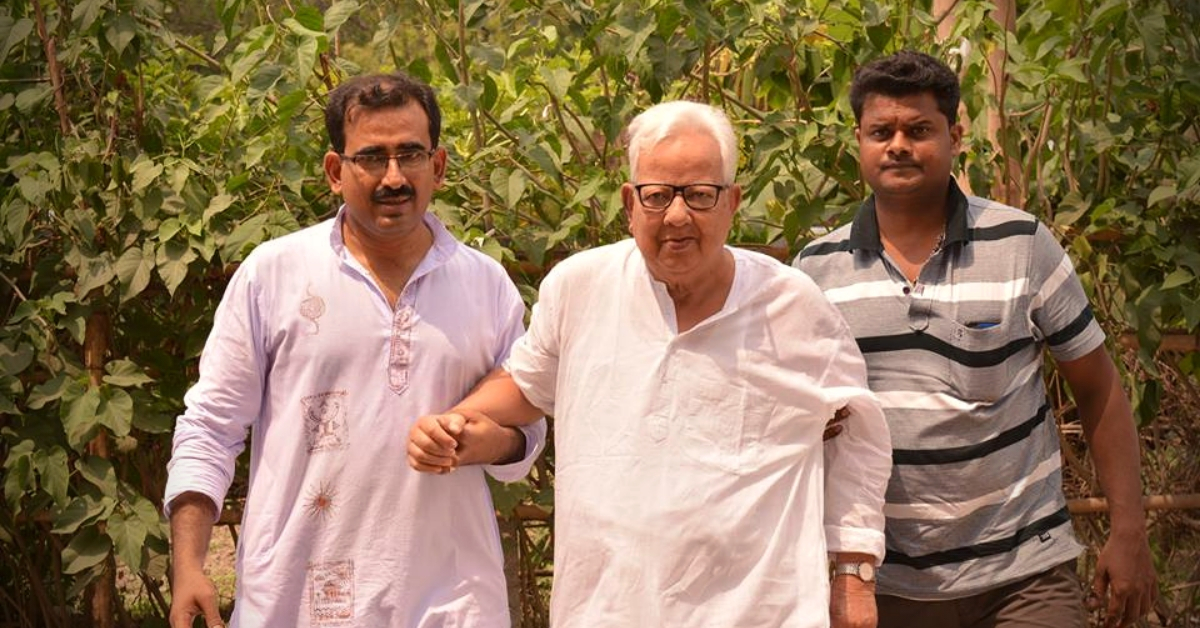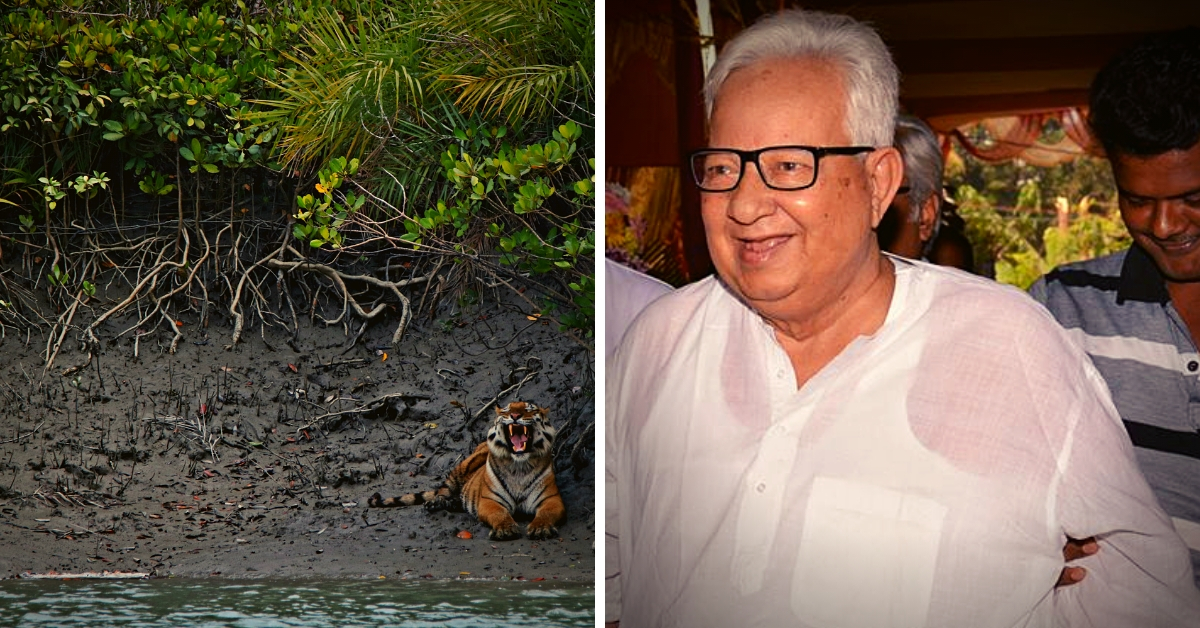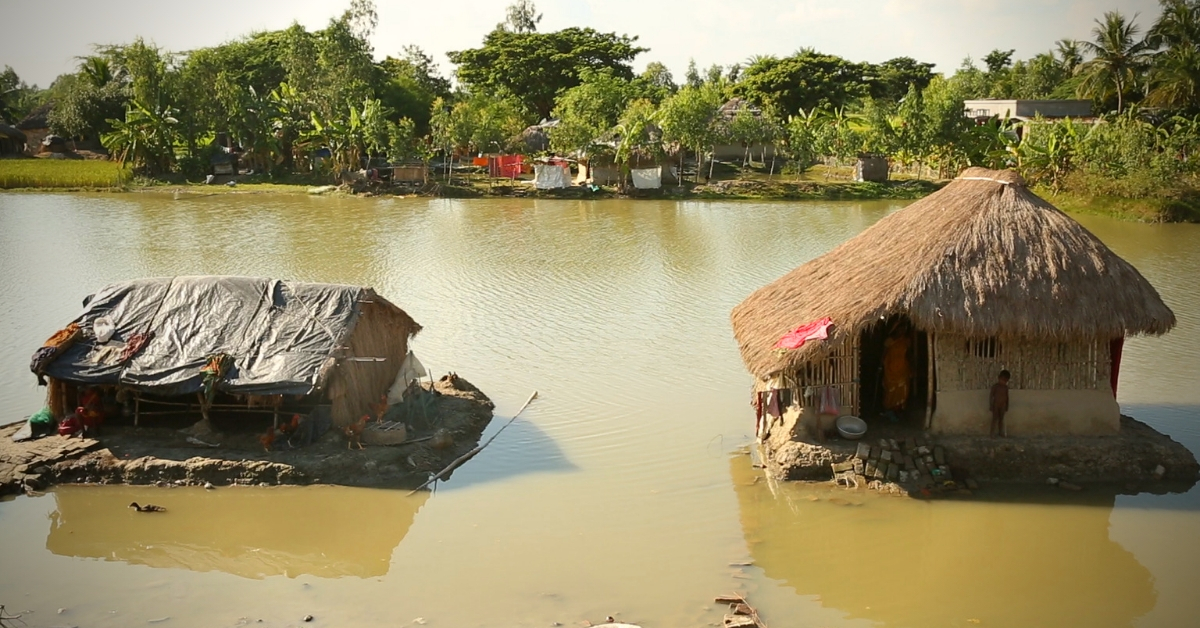80-YO Dedicated 52 Years of His Life to Saving the Sundarbans & Thousands of Its People!
“I am not sure if, after 50 years, Sundarbans will be still alive. I fear that the next generations will never know its vast natural beauty. However, I am not ready to give up on one of the world’s most precious natural marvels!”

This article has been sponsored by the Jamnalal Bajaj Foundation
Almost 100 km away from Kolkata, lies a village in the islands of Sundarbans– a village that could have met its end some decades ago, if not for the timely interference of one dedicated soul.
Meet Tushar Kanjilal, a man who is commonly known as the Saviour of the Sundarbans, a sobriquet that came about fifty years ago when he fell in love with the beautiful marshes of Bengal. An ardent follower of Rabindranath Tagore, he decided to take the leap towards change, impacting thousands of lives with a better tomorrow.
“Most people know Tagore as a poet and a Nobel laureate, but very few know of his work in the area of rural development, especially the three villages he adopted and named Shreeniketan. One important lesson he taught was never to scratch the surface when working to help a community but to immerse oneself entirely and build lasting relations. I was highly influenced by him and decided to follow his path,” the 84-year-old social worker told The Better India.
Thus began his search for a village to which he could dedicate his life and knowledge.

“After travelling across the country, I came back to my state and found a place, Rangabalia, in one of the islands of Sundarbans. This was a village which was devoid of any development. It had no facilities like drinking water, healthcare, pukka roads or transport. Even the education facilities were very scarce. So, I decided to settle there permanently and help the community develop and build itself,” says Tushar.
He settled there on January 1,1967. Since then, his entire life has been entwined with the people of the Sundarbans.
Applying appropriate technology to the inaccessible areas of the region, Tushar has helped protect the world’s largest mangrove forest, known for its rich wildlife, especially due to its prominent inhabitant, the Royal Bengal Tiger.
For the past few decades, this octogenarian has been a living bridge between the remote mangrove swamps and the modern world, urging individuals and organisations to lend a hand in their struggle.
A path full of challenges

Spread across 20,000 square km in India and Bangladesh, the Sundarbans is a region with an abundance of beauty and yet, constant existential fear. With the rising sea level as an effect of climate change, many parts of its islands have been swallowed by the waves. The risk of vanishing is ever-present, and one way to remedy this is to protect the mangrove forests that hold on to the soft soil of the region, adds Tushar.
Also Read: Experts from Europe Set to Bring Electricity to Bengal’s Sundarbans Using Cow Dung!
He shares, “When I began my work with the villagers, it had its share of challenges. One of the first was to establish trust and convince them of what they deserved so that they could be mobilised to work towards it. The next and biggest challenge was ecological degradation. Nature did not create such beauty to be hacked to death by humans. The consequences were and continue to be dire for the villages around the region. I helped the people realise that and work towards preserving the precious forests and its creatures.”
Mass plantation drives, mangrove preservation, and plantation, self-development schemes to uplift rural communities and use sustainable farming techniques, were a few of the initiatives Tushar took up.
Recognising the unsung hero

Owing to his work, Tushar held a number of prominent positions–a member of the Sundarbans Development Board; chairman of the Task Force for Preparation Master Plan for the entire region; member of the National Committee for Promotion of Economic and Social Welfare; and member of the Standing Committee of CAPART, Government of India.
With an impressive body of work, he has received several accolades. In 1984, he was declared the National Teacher, and a year later, he was honoured with the ‘Man of the Year’ Award by The Week magazine, which recognises the top 20 unsung heroes of India.
After this, in 1996, he received the fourth highest civilian award, the Padma Shri, followed by the Jamnalal Bajaj Award in the category of Application of Science and Technology for Rural Development by Jamnalal Bajaj Foundation in 2008 and Rathindranath Puroshkar by Viswa-Bharati University in 2006.
Future

What the British began 150 years ago, by cutting the Sundarban forests to extract timber, continues to ail the region. Efforts by Tushar and the likes of him have surely slowed down the degradation, but stopping it might take a stronger consolidated effort from the government and the citizens.
“I am not sure if, after 50 years, the Sundarbans will be still alive. I fear that the next generation will never know its vast, natural beauty. However, I am not ready to give up hope yet. Youngsters are stepping in to make a substantial difference and turn the clock backwards. I hope more such efforts spring up from the rest of the country and beyond to restore one of the world’s most precious natural marvels!” Tushar signs off.
Find more details about the Jamnalal Bajaj Awards here.

(Edited by Shruti Singhal)
Like this story? Or have something to share?
Write to us: [email protected]
Connect with us on Facebook and Twitter
If you found our stories insightful, informative, or even just enjoyable, we invite you to consider making a voluntary payment to support the work we do at The Better India. Your contribution helps us continue producing quality content that educates, inspires, and drives positive change.
Choose one of the payment options below for your contribution-
By paying for the stories you value, you directly contribute to sustaining our efforts focused on making a difference in the world. Together, let’s ensure that impactful stories continue to be told and shared, enriching lives and communities alike.
Thank you for your support. Here are some frequently asked questions you might find helpful to know why you are contributing?


This story made me
-
97
-
121
-
89
-
167













